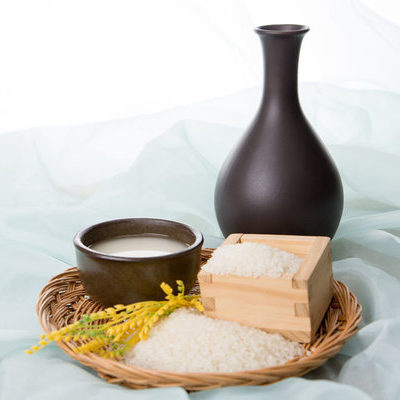
Rice Wine
What is Rice Wine?
Rice wine is an alcoholic drink that is popular in Asia and is made from fermented rice that is later distilled into a spirit. This wine is used as both a drink and a cooking ingredient in Asian cuisine. Typical rice wines have a sweet taste and contain around 15 to 20 percent alcohol by volume content.
- There are dozens of different types of rice wines that are native to different parts of Asia.
- They may be milky, clear, or even solid in a few cases.
Some of the most popular rice wines are:
- Sake (Japan)
- Brem (Indonesia)
- Tuak (Malaysia)
- Lihing (Malaysia)
- Makgeolli (Korea)
- Lao Lao (Laos)
- Shaoxing Wine (China)
- Handia (India)
- Rượu cần (Vietnam)
Origin
It is unclear whether this wine had a single point of origin or whether it was invented separately in different cultures. However, it is known that in China (Shaoxing wine) was first brewed during the Xia dynasty around 1900 BC. There is some evidence to indicate that this wine may have existed in China even before this period. Chinese influence on neighboring countries may have led to the import into Japanese, Vietnamese, and Korean cultures. Some Indian rice wines are tribal traditions and it is possible that Malaysian and Filipino rice wines are even indigenous.
Nutrition
The nutritional value for 100 mL of rice wine:

Research shows that makgeolli wine has essential amino acids, probiotics, vitamins, and minerals, as well as antioxidant, anti-cancer, anti-inflammatory, anti-aging, and anti-colic properties. Other rice wines also exhibit similar properties. This wine, in general, also contains magnesium, phosphorus, potassium, and selenium in decent quantities.
Like any other alcoholic drink, rice wines have their downside. This contains more alcohol than beer or grape wine. Overconsumption can result in a change in the brain’s functioning patterns, liver cirrhosis, pancreatitis, heart problems, strokes, different types of cancers, as well as affect overall immunity.
Commercial production
It is commercially produced in rice-growing regions of the world, especially in Asia. Different types of this wine have different production techniques, although the main similarity is this wine is made from rice mash, which is left to ferment. The liquid is collected and filtered before further processing and bottling. Rice wines, like any other alcohol, is best stored in a cool and dry place. An unsealed bottle can last for up to 6 months under such conditions.
Rice wine recipes
This wine is excellent for cooking and is extensively used in Asian cuisine. Here are a few dishes.
- Kung Pao Chicken Stir Fry
- Chicken in Rice Wine
- Lemon Rice with Wine
- Halibut
- Chicken Mee Sua
- Shaoxing Prawns
- Bánh Mì with Red-Cooked Pork
FDA regulations
Alcohol is regulated by the TTB (Alcohol and Tobacco Tax and Trade Bureau) unless it is an artisanal product, in which case it is regulated by the FDA. There are strict regulations regarding the governing of any type of distilled liquor. Rice wine is defined as wine made wholly from rice, in accordance with the commonly accepted method of manufacture of such products.
References
Michael Rucker, Rice Wine Health Benefits and its Effects on the Body, https://michaelrucker.com/functional-supplements/rice-wine-health-benefits/
National Institute of Alcohol Abuse and Alcoholism, Alcohol’s Effects on the Body, https://www.niaaa.nih.gov/alcohols-effects-health/alcohols-effects-body
